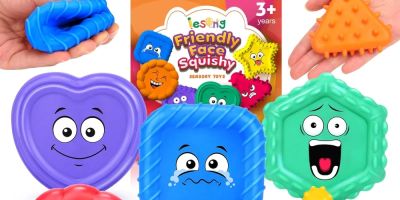- 1-The-Role-of-Toys-in-Emotional-Expression
- 2-Types-of-Toys-That-Foster-Emotional-Growth
- 3-Psychological-Benefits-of-Expressive-Play
- 4-Real-Life-Stories-Demonstrating-Emotion-Expression
- 5-Tips-for-Choosing-Toys-to-Support-Emotional-Development
- 6-Where-to-Find-Quality-Emotion-Supporting-Toys-at-Knight-Toys
1. The Role of Toys in Emotional Expression
Toys are much more than mere entertainment; they serve as powerful tools through which children explore and express their feelings. Through imaginative and sensory play, children can communicate emotions they might not yet have the words for. This process is essential for emotional literacy, helping youngsters understand and regulate their feelings.
By interacting with toys, children enact scenarios, process experiences, and gain confidence in expressing joy, fear, anger, or sadness in a safe environment.
1.1 Play as a Language of Emotion
When children play, especially with dolls, action figures, or role-playing sets, they act out emotions and situations that mirror their internal world, fostering emotional awareness.
2. Types of Toys That Foster Emotional Growth
Certain toys are particularly effective in supporting children’s emotional expression and development.
2.1 Dolls and Figurines
These allow children to create stories and scenarios that reflect their feelings and relationships.
2.2 Art Supplies and Sensory Toys
Crayons, clay, and tactile toys give children alternative outlets to express complex emotions through colors and textures.
2.3 Interactive and Educational Toys
Games and toys that encourage communication and cooperation teach empathy and emotional regulation.
3. Psychological Benefits of Expressive Play
Expressive play facilitated by toys helps children:
3.1 Develop Emotional Intelligence
By recognizing and articulating emotions through play, children enhance their emotional vocabulary and self-awareness.
3.2 Improve Social Skills
Role-playing with peers or caregivers builds empathy, negotiation skills, and conflict resolution abilities.
3.3 Reduce Anxiety and Stress
Engaging with familiar toys can provide comfort and a sense of control during challenging emotional periods.
4. Real-Life Stories Demonstrating Emotion Expression
Consider Emma, a shy 5-year-old who struggled to talk about her fears after starting school. Through playing with her favorite animal figurines, she reenacted stories of bravery and friendship, helping her caregivers understand her worries. This breakthrough allowed targeted support, illustrating how toys can unlock hidden emotions.
5. Tips for Choosing Toys to Support Emotional Development
Select toys that encourage creativity and communication. Look for items that are open-ended rather than overly structured, allowing children to project their feelings freely. Safety and age-appropriateness are also key considerations.
6. Where to Find Quality Emotion-Supporting Toys at Knight Toys
For parents and educators seeking toys that help children express emotions, Knight Toys offers a thoughtfully curated selection designed to nurture emotional growth. Alongside expert guidance and quality assurance, Knight Toys is your trusted partner in supporting healthy childhood development.





